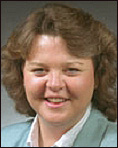Aug 26, 2004Although sales of passive UHF RFID tags to manufacturing companies will rise dramatically during the next four years, resulting in lower tag prices, the average unit price for passive UHF RFID tags will not reach the 5-cent level by 2008, according to ARC Advisory Group, a research firm based in Dedham, Mass. Instead of dipping to a nickel, as some industry observers predict, the average price of a passive UHF RFID tags will drop to only 16 cents, according to recently issued ARC report entitled "RFID Systems in the Manufacturing Supply Chain."
ARC found that in 2003, the average unit price of tag was 91 cents for a passive HF tag and 57 cents for a passive UHF tag. The firm expects that by 2008, the unit price will drop to an average of 16 cents for passive UHF tags, which vary by form factor, and to nearly 30 cents each for passive HF tags, although some tag manufacturers with high-volume contracts may be able to offer passive UHF tags for as low as 5 cents each. The tag manufacturing process will be a major factor affecting costs, according to Chantal Polsonetti, V.P. of manufacturing advisory services at ARC and author of the report, who says that “antenna attachment or tag assembly, not IC production, will be a primary supply-side inhibitor to increased volume and in turn lower cost tags.”
To gather the data for this study, ARC conducted a census of RFID tag and reader manufacturers and based its forecasts on factory-level shipments. ARC says it interviewed virtually all suppliers of passive and semi-passive HF and UHF tags and readers for supply chain applications, as well as some end users that are clients of ARC’s Manufacturing Advisory Service.
The degree of adoption of RFID by retailers depends largely on how low the price of tags drops. “This is evident in Wal-Mart’s contention that the next tier of applications—tagging higher-end items—are contingent on tag prices of 25 cents or less, and expanded item-level tagging on tag prices of 5 cents or less,” says Polsonetti
One industry sector that Polsonetti says is not as sensitive to tag price is the pharmaceutical market, especially given that the U.S, Food and Drug Administration has recommended the use of RFID technology to create a "pedigree"—a secure record documenting that the drug was manufactured and distributed under safe and secure conditions (see FDA Endorses RFID Technology.
“The market potential here is huge, with over 12 billion units as candidates for tagging in the United States alone,” writes Ponsonetti, who notes that because pharmaceutical drugs have a higher retail prices and higher margins relative to low-priced CPG products, they can accommodate RFID tags that cost more.
The report determined that in addition to the high cost of tags, another related roadblock to wide-scale RFID implementation by manufacturers of consumer goods is the lack of a perceived business case. But Polsonetti believes that by installing fixed RFID readers that can read tags automatically, a company could reduce or eliminate personnel requirements and thereby offset the cost of buying tags.
“In order for RFID to be truly successful, the information it holds has to be generated at no cost, so the question becomes how to automate the data collection without any human intervention,” says Polsonetti, who explains that with fixed readers mounted on conveyors, dock doors or forklifts, data collection can occur automatically as tagged items, cases and pallets pass by.
“Hands-free operations through use of fixed readers and other RFID infrastructure that are part of the factory or distribution center infrastructure will eliminate the incremental labor and material-handling costs associated with current slap-and-ship techniques,” says Polsonetti. “The reduced need for manual handling associated with this approach has been attributed to anywhere from a 5 to 35 percent reduction in labor costs for a given distribution center. The promise of greater accuracy of shipments, plus reductions in the accompanied returns and processing, can also be beneficial.”
Polsonetti says her report was written to serve as a planning tool for the many companies that face RFID supply chain directives and may feel overwhelmed by the variety of available RFID products. Additionally, ARC intends to introduce soon an online RFID knowledge center that will provide ARC’s clients with information on RFID tags and readers. Information on the report can be found at www.arcweb.com/res/rfid.


